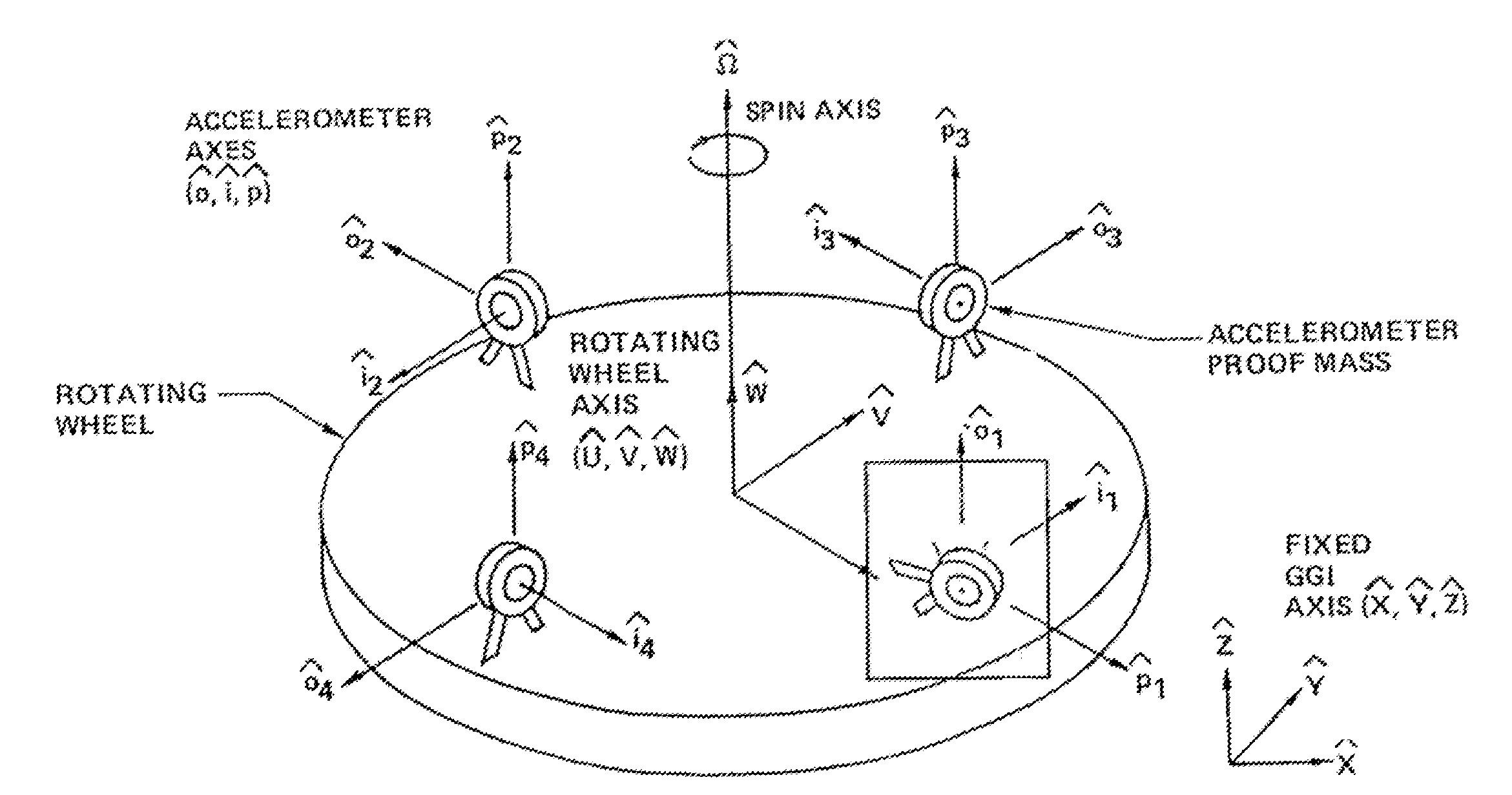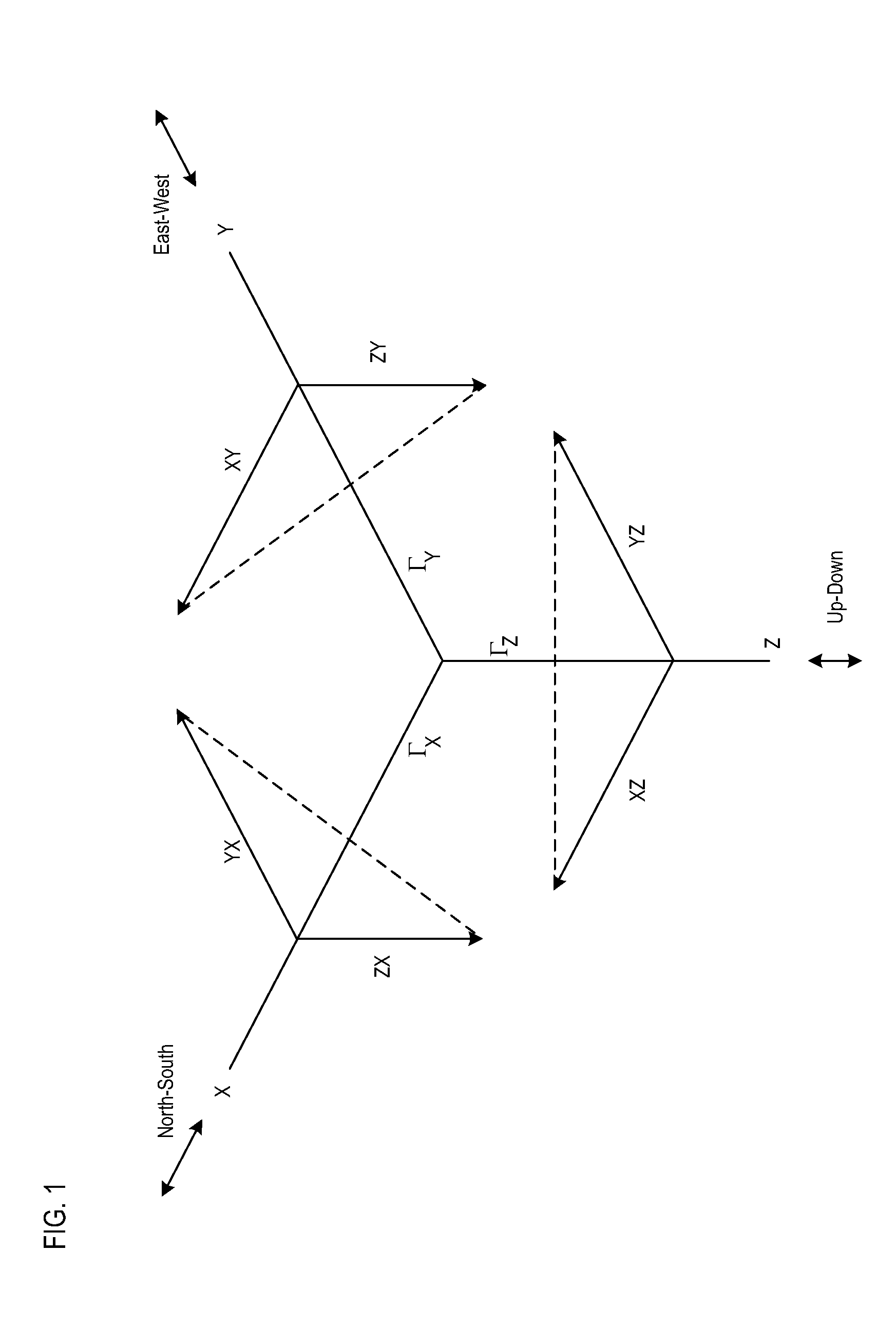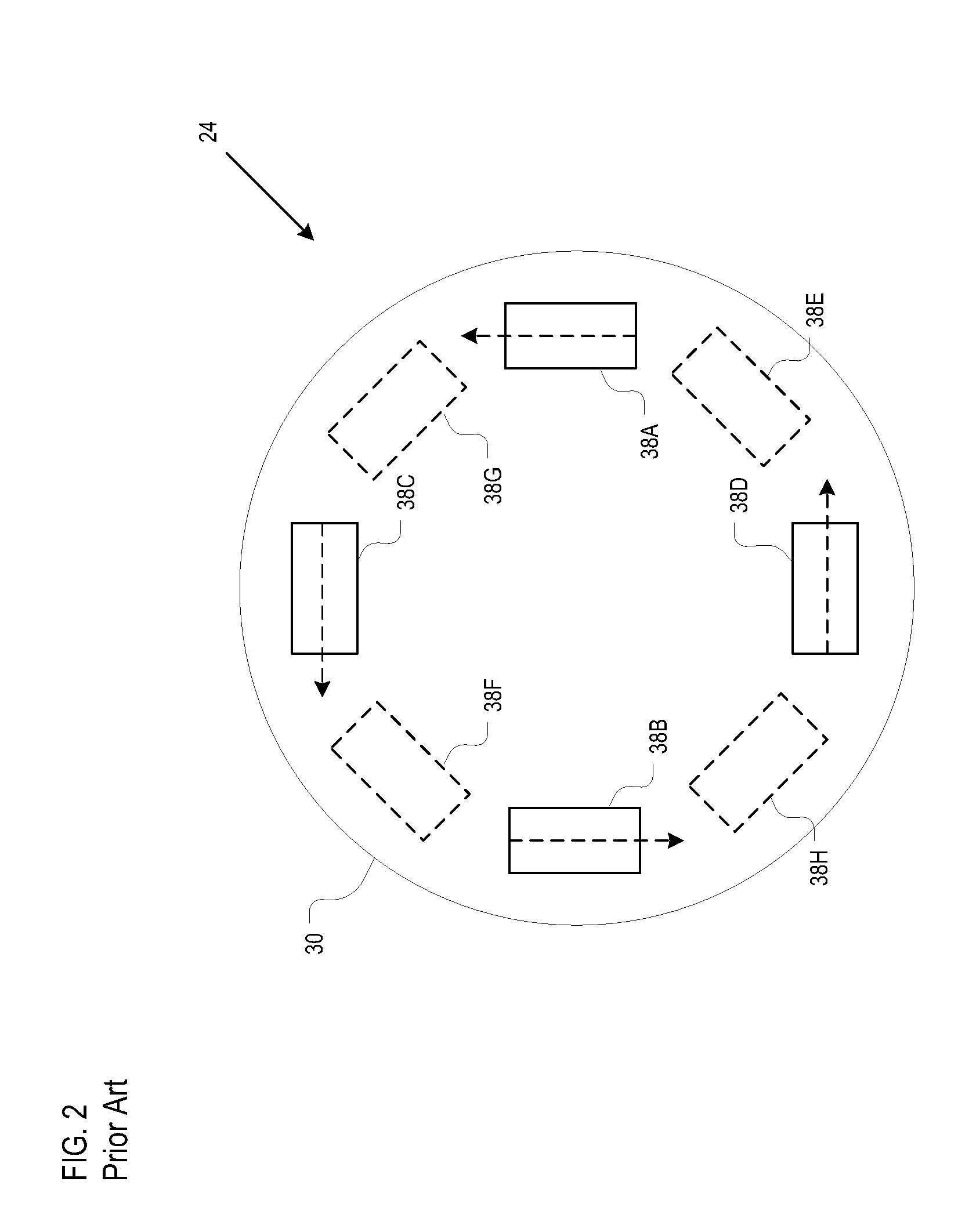Gravity Gradiometer System
a gravity gradiometer and system technology, applied in the field of gravity gradiometers, can solve the problems of additively corrupting tensor measurements, unable to enable the measurement of additional gradients, and completely eliminating such rotations
- Summary
- Abstract
- Description
- Claims
- Application Information
AI Technical Summary
Benefits of technology
Problems solved by technology
Method used
Image
Examples
Embodiment Construction
[0070]Accelerometer Misalignment
[0071]FIG. 4 depicts the proof mass support arrangement in the prior art wherein the pendulous axes (Pi) aligns with the spin axis W. As previously disclosed, the net misalignment, in the axial and radial directions, of the accelerometers on a disc can severely impact system performance. In prior-art mounting arrangements, axial and tangential alignments are not independently adjustable.
[0072]Misalignments of individual accelerometers are of far less concern than the net misalignments of the four accelerometers in a gradiometer complement. As a consequence, if the accelerometers are mounted on the disc such that their pendulous axes have differing components in the axial and tangential directions, it is possible to electronically adjust the null positions of the individual accelerometers to enable independent net realignment in both directions (i.e., axial and tangential).
[0073]FIG. 5 depicts a proof mass support arrangement in accordance with the ill...
PUM
 Login to View More
Login to View More Abstract
Description
Claims
Application Information
 Login to View More
Login to View More - R&D
- Intellectual Property
- Life Sciences
- Materials
- Tech Scout
- Unparalleled Data Quality
- Higher Quality Content
- 60% Fewer Hallucinations
Browse by: Latest US Patents, China's latest patents, Technical Efficacy Thesaurus, Application Domain, Technology Topic, Popular Technical Reports.
© 2025 PatSnap. All rights reserved.Legal|Privacy policy|Modern Slavery Act Transparency Statement|Sitemap|About US| Contact US: help@patsnap.com



